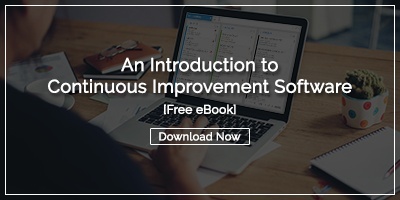 Kaizen events are a frequent subject of discussion when we are meeting with potential clients or others who are interested in the technology that powers improvement. Although we talk to folks in almost every industry, almost everyone we talk to has one thing in common. They’ve lived through a disastrous - or at least ineffective - Kaizen event. We’re not surprised because there are lots of ways that rapid improvement blitzes can go off the rails. We don’t want that to happen to you, so we’ve assembled a list of our most important advice for making your Kaizen event a smashing success.
Kaizen events are a frequent subject of discussion when we are meeting with potential clients or others who are interested in the technology that powers improvement. Although we talk to folks in almost every industry, almost everyone we talk to has one thing in common. They’ve lived through a disastrous - or at least ineffective - Kaizen event. We’re not surprised because there are lots of ways that rapid improvement blitzes can go off the rails. We don’t want that to happen to you, so we’ve assembled a list of our most important advice for making your Kaizen event a smashing success.
Choose a challenge that is a good fit for rapid improvement
How does the old saying go? If all you have is a hammer, everything looks like a nail? Using the wrong improvement tool for the job is something we see a lot. While Kaizen events are a useful option, they are not right for every problem. Make sure that you deploy them when the problem is limited enough in scope that it can reasonably be addressed in three to five days. It should also be a problem that is pressing enough to justify the short-term, but full-time attention of a small team.
Have clear and measurable goals
The first step in achieving success is defining exactly what success looks like. Which quantifiable business metrics do you expect to improve? You may have financial objectives, time-to-market goals, quality targets, or other aspirations. We like the SMART goal approach. Goals should be specific, measurable, actionable, relevant, and timely.
Ensure Strong Executive Support
Although Kaizen events are short, they do require a considerable amount of resources in terms of the effort that will be applied by the team before, during, and after the event. Therefore, it is essential to have complete buy-in and visible support from the management team. Enlisting an executive sponsor is a smart approach to getting the backing you will likely need.
Hire or Train a Skilled Facilitator
Although Kaizen events are highly collaborative affairs, it is still necessary for there to be a leader with experience in spearheading improvement efforts of this type. The person doesn’t have to be intimately familiar with the process to be improved, in fact, some organizations hire professional Kaizen event facilitators. But they do need to be well versed in project management, proper documentation, and the improvement technology and tools you intend to leverage during the event.
Assemble the Right Team
In addition to the facilitator, the team should involve the people who execute the process on a daily basis. It may also include people who work on adjacent operations, and potentially even the internal and external customers involved. Sometimes it also helps to enlist subject matter experts from other parts of the organization.
Build a Solid Roadmap
Kaizen events require careful planning and a well-defined order of operations. For example, there should be time set aside to document and define the current state, to discuss potential solutions and achieve consensus on what action to take, to implement the improvements, and to refine those improvements and develop standard work. The roadmap should also include training on the new standard, communication, and celebration of success.
Provide Training and Consistent Practice
Sometimes the best reason to do a Kaizen event is that you haven’t done one in a while, or you have employees who haven’t had the opportunity to participate in one before. As with any skill, people will become better at Kaizen event execution with practice and coaching.
Leverage Improvement Technology
Kaizen events involve a lot of moving parts and require effective communication. An improvement platform gives the team one place to store documents, manage tasks and document the impact of the implemented improvements. Many Kaizen events involve cross-functional collaboration, which is usually improved with a common repository for information and one definitive version of the truth.
Put Measures in Place to Ensure Lasting Improvement
The saddest Kaizen events are those that result in immediate improvement that is not sustained over the long term. Never underestimate the tendency to regress to old, comfortable habits. Instead, ensure that the changes you implement during a Kaizen event continue to pay dividends over the long term. Set up regular checkpoints to review processes and document the long-term impact of improvement. Also, keep in mind that the goal is continuous improvement, the Kaizen event should only be the jumping off point for the next improvement cycle.
Our clients who have followed this advice have seen impressive results from rapid improvement regarding safety, cost reduction, customer satisfaction, and even employee morale. Give these tips a try during your next event and let us know how it goes.



Add a Comment